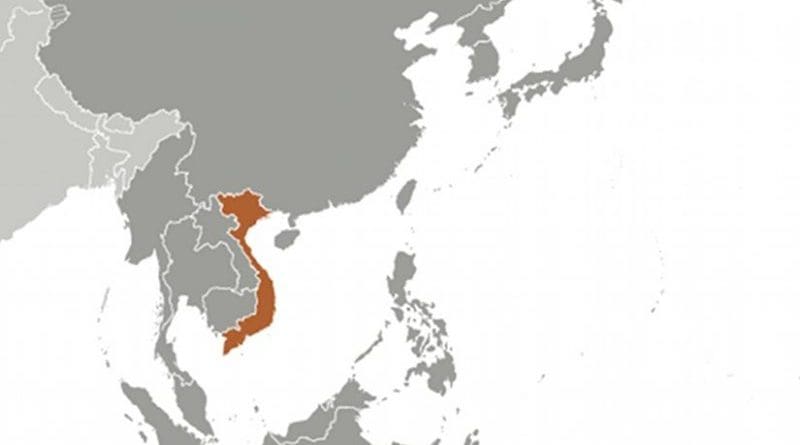The Curious Case Of Tata Steel In Vietnam – Analysis
By IPCS
By Amruta Karambelkar
Vietnam has set up a team of officials from the central and provincial governments to address the issues that have obstructed Tata Steel from acquiring a green signal for its project to construct a US$5 billion facility in Vietnam, under the aegis of a MoU signed with Vietnam Steel Corp in 2007. After a four-year long delay, there seems to be a sign of hope. In this context, what caused the delay? Did the Indian steel major fail to mobilize the Vietnamese government? What are the dynamics of this problem?
The tripartite venture between Tata Steel, Vietnam Steel Corporation, and Vietnam Cement Industries is to develop a steel plant in the coastal province of Ha Tinh, making India one of the top ten investors in Vietnam. Tata Steel holds a sixty five per cent stake in this venture. The joint venture is expected to have an output of 4.5 million metric ton a year. The terms of agreement stipulate that through this venture Tata Steel would have a thirty per cent stake in the Thach Khe iron mines.
The construction of this plant has been delayed because Tata Steel has not yet been able to acquire an investment license and land clearance for the venture. As per Vietnamese law, the onus is on the local government to bear the cost of land clearance. The investor is not expected to incur this cost, though as per reports the investor is somehow made to pay for it. This project requires 725 hectares of land and the cost of getting land clearance is close to US$200 million. Tata Steel wants the Vietnamese government to support the clearance cost but the latter has refused citing budgetary constraints. Thus, the project is deadlocked.
The issue is not about regulatory complexities alone; it is also a case of the differential treatment towards India’s largest steel manufacturer. First, the project site identified by Tata was given to Formosa Plastic group, a Taiwanese manufacturing firm, for its steel plant. Tata finally got the land in Vung Ang industrial zone in Ha Tinh province only in 2009; that is two years after signing the MoU. Moreover, with respect to site-clearance, the Taiwanese group bore the partial cost of getting land clearance for its steel plant; the rest was taken care of by the local government. Tata too wants the government to support the clearance cost for its plant but it has not been accepted for reasons mentioned earlier in this article.
Why did Tata Steel, the world’s third largest steel manufacturer, lose out in competition? Why have laws been applied unevenly when as per law both the companies are supposed to follow the same procedure? The answer to the first question needs introspection from the Indian side. The story takes an interesting turn when one explores the possible reasons that led to the incidence of differential treatment. As per reports, Chinese interests have been greatly if the following dots are connected. A member of the last ruling dynasty of China has stakes in Formosa; in addition, the head of this firm has close connections with the erstwhile dynasty. Vietnam therefore, conscious of its relations with China, has stalled the construction of the Tata Steel plant.
Vietnam is taking steps to improve its governance and legal system to simplify procedures for foreign investors. Vietnamese Prime Minister Nguyen Tan Dung issued in a statement that the government would take effective steps to solve difficulties for business through administrative reforms, tax benefits and so on. The prime minister also expressed a desire to provide an open and transparent environment for the business community. Despite these developments to ease the conduct of business in the country, attention also needs to be drawn to China’s role as a potential spoiler.
Vietnam is an important investment destination for India, and although China’s potentially negative role is not a recent development, India needs to actively take it into account. The Chinese had tried to eliminate competition from India in Vietnam earlier by convincing them superiority of its products. Indian companies interested in Vietnam therefore have to prepare themselves to face stiff competition from Chinese companies. It is the effectiveness with which the Chinese convince buyers about the superiority of their products and services that gives them an edge. In light of this, did Tata Steel fail to argue their case convincingly in front of the local government?
The deadlock over this project has been raised at all bilateral visits between India and Vietnam in the past four years. This was done most recently at the India-Vietnam business forum in New Delhi where President Truong Tan Sang assured that he would look into the matter. As mentioned earlier, Vietnam has assigned a team of central and provincial officials to offer with a solution. More questions emerge from these recent developments. Why has the Vietnamese government come forward to help only after four years? Is it the success of Indian diplomacy or can it be attributed to the efforts of Tata Steel? Or, are regional developments (in South China Sea) and Vietnam’s souring of relations with China making the former strengthen its relations with India?
Amruta Karambelkar
Research Intern, IPCS
[email protected]


Given TATA STEEL’s record on negative impacts on communities and environment, I wonder that nothing is mentioned on this aspect. http://news.bhopal.net/2007/02/20/the-ugly-face-of-tata/